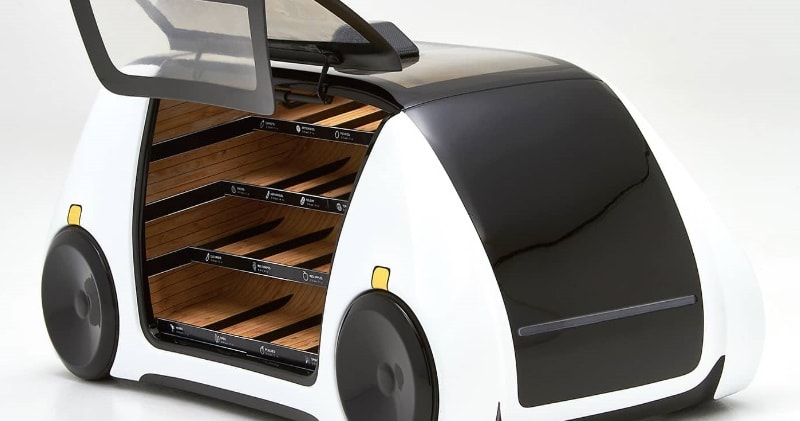Groceries are soon to be a $1 trillion business worldwide, and perishables like fresh produce make up around 60% of all groceries sold, however according to Kantar Worldpanel just a tiny fraction of that – less than 5% – has moved online.
source/image: robomarts
This is because having humans pick and deliver groceries is prohibitively expensive for retailers, and because consumers don’t trust someone else picking produce for them. So we’re building a fleet of on-demand, self-driving stores that we’ll license to retailers to power the most affordable on-demand delivery services across the world.
source/image: robomarts
Consumers will simply tap a button to request the closest robomart. Once it arrives, they head outside, unlock the doors, and shop for the products they want. When they are done, they just close the doors and send it on its way.
Advertisement
Robomart tracks what customers have taken using patent pending “grab and go” checkout free technology and will charge them and send a receipt accordingly.
source/image: robomarts
And this will be better and cheaper than home delivery because there is so much room on the roads for a rolling vegetable bin, and one can pay for Level 5 self driving autonomy with high value products like celery and lettuce.













